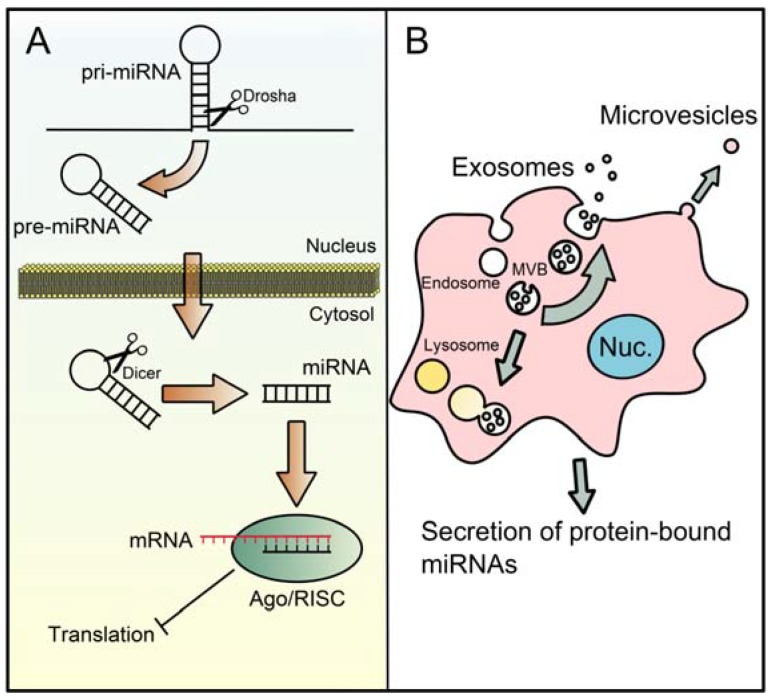Figure 1.
Processing and release of miRNAs. (A) Mature miRNAs are produced through a two-step process. First, double-stranded hairpin structures are cleaved out of long single-stranded primary miRNAs (pri-miRNA) by the Microprocessor complex that includes Drosha. This forms the pre-miRNA. Next, after the pre-miRNA is transported into the cytosol, the loop structure is removed by Dicer to yield the mature miRNA. The final miRNA is then loaded into the RNA-induced silencing complex (RISC) with an argonaute (Ago) protein. The passenger strand is removed inside the RISC and the guide strand helps to bring in the target mRNA. Translation is prevented either by physical obstruction of the mRNA or through endonuclease activity of Ago2; (B) Mature miRNAs can be released from cells either in exosomes, microvesicles or through secretion in a complex with proteins (namely, Ago2). Exosomes are derived from the intralumenal vesicles of multivesicular bodies (MVBs). Briefly, endosomes bud inward from the plasma membrane, and intralumenal vesicles bud inward from the endosome membrane. MVBs have two possible fates: fusion with a lysosome or fusion with the plasma membrane. The latter releases the intralumenal vesicles (now called exosomes) into the extracellular space. Microvesicles bud outward directly from the plasma membrane.

